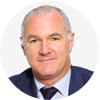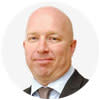
The Urban Developer’s latest Gold Coast housing market insights reveal that conditions on the Gold Coast are cooling, with values now falling faster than almost anywhere in Queensland.
This resource, updated periodically, will collate and examine the economic levers pushing and pulling the Gold Coast’s housing market.
Combining market research, rolling indices and expert market opinion, this evolving hub will act as a pulse check for those wanting to take a closer look at the movements across the market.
| Type | Month | Quarter | Annual | Median |
|---|---|---|---|---|
| All | -1.9%▶ | -4.8%▼ | 13.5%▼ | $867,542▼ |
| Houses | -2.5%▶ | -6.5%▼ | 12.1%▼ | $1,032,755▼ |
| Units | -0.7%▼ | -1.7%▼ | 16.0%▼ | $663,503▼ |
^Source: Corelogic - September 2022
Gold Coast dwelling values surged 53.3 per cent higher through the recent growth phase, marking one of the most significant growth phases in the region’s history.
The Gold Coast, in Queensland’s south-east, became a safe harbour for interstate migrants looking to flee the heavy Covid-19 restrictions in New South Wales and Victoria throughout the pandemic.
The rush of new arrivals and subsequent demand for homes meant property prices surged consistently until earlier this year.
Since values peaked in June, the Gold Coast housing market has dropped by 4.8 per cent, with a larger 6.5 per cent drop in house values compared with the unit sector where values are down 1.7 per cent since peaking.
Although house values are falling at more than three times the pace of declines in the unit sector, the weakness comes after a more significant rise in house values through the upswing.
Gold Coast house values were up 56.2 per cent from the Covid trough to recent peak, while unit values increased by 47.6 per cent.
Values across both sectors of the market remain more than 45 per cent above pre-Covid levels at the end of September.
Economists and property market experts are now expecting Gold Coast housing values to continue to trend lower over the coming months and into 2023, however its likely prices will find a floor once interest rates stabilise.
Over September, national median dwelling values fell 1.4 per cent to $730,000 to be down 4.8 per cent—or $37,000—from their peak. Dwelling values peaked in April with a pandemic gain of 28.6 per cent or $171,000.
Despite the national housing market correction, which experts tip to bottom out in the first quarter of 2023, strong population growth, a fast-growing economy and more than $20 billion in infrastructure and investment ahead of the 2032 Olympic Games is expected to continue to drive the Gold Coast property market over the next decade.
Gold Coast rental vacancies rise, prices stabilise
The Gold Coast’s extraordinary rental crisis may have passed its peak, with new data showing vacancy rates rising in almost every Gold Coast suburb.
Average weekly rental costs are also beginning to fall in many areas as investors return to the market, providing a much-needed boost to supply.
Rate rises force new house sales to tumble
Interest rate hikes have stalled momentum in the housing market, with new house sales plummeting 15.7 per cent in the three months to the end of September.
New figures released by the Housing Industry Association show new house sales fell for the third consecutive month in September. The RBA increased the cash rate in October by 25 basis points to 2.6 per cent. A basis point is equal to 0.01 percentage point.
Unit sales in Gold Coast towers defy shaky economy
Sales of new apartments on the Gold Coast edged higher in the June quarter, as the city’s ongoing supply shortage defied interest rate increases to push prices up.
The average price paid for these apartments was $1.1 million—3.8 per cent higher than the March to June quarter, just shy of the record high of $1.14 million reached in the September quarter of 2020 at the pandemic height.

Nicola Powell
Chief of Research
Domain
“Queensland continues to record the strongest population growth of all the states and territories.
“Those lifestyle areas, particularly the Gold Coast, have really been front of mind for those relocating from interstate.
“We’re seeing one of the tightest rental markets overall when you compare it to say Brisbane and the Sunshine Coast and we’re also seeing asking rents for units on the Gold Coast increase almost 6 per cent in the last three months.”

Tim Lawless
Head of Research
Corelogic
“Positive internal and intestate migration should continue to support housing demand across the region, although we shouldn’t expect the surge in migration to remain as high as what was recorded through the Covid period.
“We are already seeing private sector measures of migration to the Gold Coast easing, but holding above pre-Covid levels.
“It’s likely overall demand for housing will remain higher relative to pre-Covid levels as more people choose to work remotely and base themselves in commutable lifestyle regions such as the Gold Coast.”

David Higgins
Residential Director
Colliers International
“The latest quarter’s sales may be slightly higher than the March quarter but well down on the extraordinary peak we saw in the first quarter of last year.
“However, sales in the 18 months to June this year have all been significantly higher on a quarterly basis than the preceding 18 months and that reflects sustained demand in the market even through the first two interest rate increases.
“There’s an emerging trend of foreign purchasers gradually re-entering the south-east Queensland investment market.”

Louis Christopher
Manging Director
SQM Research
“Potentially we’re seeing a peak in the rents after what’s been an unprecedented rise in rental activity on the Gold Coast.
“You look at the south end of the Gold Coast, the rests have essentially peaked. They peaked in late July and you can argue they have been falling since.
“What we could also be seeing is people moving back to Sydney and Melbourne. They’ve tried the sea change, their employer is now asking them to come back into the office and that means them needing to come back into the capital cities.”
ANZ has tipped house prices to drop by 18 per cent nationally by the end of next year before climbing by 5 per cent in late 2024.
CBA now expects house prices nationally to drop by 15 per cent over the next 18 months.
NAB is forecasting national house prices to drop 20 per cent overall from their peak, with the bulk of the decline to come next year for most capitals except Sydney.
Westpac has also updated its property forecasts, with national prices tipped to drop by 18 per cent by the end of next year before climbing by 5 per cent in late 2024.
| Week | Clearance rate | Total Auctions |
|---|---|---|
| Week ending 4 September 2022 | 44.6% | 68 |
| Week ending 11 September 2022 | 44.9% | 109 |
| Week ending 18 September 2022 | 50.0% | 44 |
| Week ending 25 September 2022 | 41.8% | 66 |
^Source: Corelogic - September 2022
Fuelled by a mammoth sea-change trend, home prices in primely positioned pockets of the Gold Coast have experienced rampant growth in the past year.
House prices jumped 5 per cent or more in eight suburbs from July to September, with frontrunner Bonogin coming in just short of 10 per cent.
By comparison, 19 local suburbs recorded growth of 10 per cent or more in the last quarter of 2021.
Mermaid Beach remains the city’s most expensive place to live, despite house prices sliding 2.7 per cent over the recent quarter to $2.6 million.
Acreage locations have continued to lead the gains, with Bonogin in the Hinterland up 9.4 per cent to median $1.6 million—33 per cent higher than a year ago.
Tallebudgera Valley was next with a rise of 7.7 per cent to median $2.16 million and huge annual growth of 35 per cent.
Median prices hit $1-million-plus in about 70 per cent of Gold Coast suburbs, and more than $2 million in six postcodes—with Bundall a newcomer to the top price bracket.
Listings had picked up heading into spring, but were well below pre-pandemic levels, underpinning demand.
Lower listings remain a feature of capital city housing markets more broadly—listings were 12 per cent down over the first four weeks of September compared with a year ago—a sign that prospective vendors are prepared to wait out the housing downturn.
There were also a slight increase in loss-making sales across the Gold Coast.
Among those suburbs where prices plunged, popular Broadbeach Waters was down 3.2 per cent to a median of $2 million, and Mermaid Waters slipped just under 2 per cent to $1.6 million.
Prices in both suburbs, along with Mermaid Beach, were still more than 20 per cent higher than a year ago.
The unit market took the biggest hit, with Ashmore and Coombabah the only suburbs where apartment prices rose 1 per cent or more.
Palm Beach—a hotspot for interstate investment in 2021—recorded the biggest drop in unit prices of 8.3 per cent, however, the median unit price of $944,000 was still 21.9 per cent higher than one year ago.
Palm Beach’s oceanfront stretch of Jefferson Lane ranks as one of Queensland’s most expensive streets, with an eye-watering median house buy-in of $6.3 million.
| City | Vacancy rate | Monthly change | Vacancies | Net change |
|---|---|---|---|---|
| Gold Coast | 0.5% | -0.1%▼ | 628▼ | -9▼ |
^Source: SQM Research - September 2022
The Gold Coast’s rental crisis may be easing, with new data showing vacancy rates rising in almost every Gold Coast suburb.
Average weekly rental costs are also beginning to fall in many areas as investors return to the market, providing a much-needed boost to supply.
According to SQM Research, vacancy rates in the north of the city had risen to an average of 0.9 per cent in September, having been at 0.4 per cent rate for much of the year.
Southern and western areas of the Gold Coast remain relatively tight with vacancy around 0.5 per cent while suburbs of the Gold Coast hinterland have seen vacancy ease to 0.6 per cent.
Prices are also showing signs of stabilising. In the southern Gold Coast, average weekly rental costs for houses were at $949 in October, down 10 per cent from a $1055 peak reached three months earlier.
The cost of renting a two-bed unit in the area was also down 11 per cent in the same period.
| Type | Rent | Monthly % change | Annual % change |
|---|---|---|---|
| Houses | $989.00 | 2.2%▲ | 29.1%▲ |
| Units | $650.00 | 0.0%▶ | 24.2%▲ |
^Source: SQM Research - September 2022
SQM Research managing director Louis Christopher said the data showed evidence that the rental market was “turning a corner” on the Gold Coast.
“Potentially we’re seeing a peak in the rents after what’s been an unprecedented rise in rental activity on the Gold Coast,” Christopher said.
“You look at the south end of the Gold Coast, the rents have essentially peaked. They peaked in late July and you can argue they have been falling since.”
Christopher said there was normally a “seasonal impact” on the Gold Coast that caused vacancy rates to rise in winter and trend down again in summer, but that effect had been absent in the past two years amid a surge in interstate migration.
“What we could be seeing now is a return to more normal conditions where the region is more influenced by seasonal factors,” he said.
| Dwelling | Approved | Monthly % change |
|---|---|---|
| Houses | 2069▲ | -0.1%▼ |
| Dwellings | 3141▲ | 9.5%▲ |
^Source: Australian Bureau of Statistics - August 2022
Land prices have more than tripled on the Gold Coast in the 12 months to March and surged 19.7 per cent nationwide, the fastest annual growth in 18 years, fuelled by supply shortages and strong demand.
The Gold Coast is now the most expensive regional area, with a median lot price of $1.8 million.
However, soaring construction costs and builder delays, combined with multiple interest rate rises and tightening lending conditions, have likely smothered some land demand.
An extra 350,000 new Gold Coast residents are expected by 2041. The state government has estimated at least 31,000 new dwellings would be needed on greenfield sites, found mostly in the region’s north.
According to the REIQ, there is only 1.9 years’ worth of approved housing lot supply left on the Gold Coast.
With its almost 640,000-strong population expected to reach 1 million in the next two decades, 6500 new dwellings a year are now needed to keep up with the pace of population growth.
Absorbing the limited supply has been the rush from interstate buyers, particularly from Sydney and Melbourne, that have flooded the Gold Coast market throughout the pandemic in search of tree and sea changes.
Even before the pandemic-fuelled jump in housing demand, the Gold Coast’s northern suburbs were among the fastest growing in the state, with the area’s population increasing by 31 per cent to more than 74,000 between 2011 and 2016.
The Gold Coast City Council plans to target the southern suburbs of Kirra, Palm Beach, Bilinga and Coolangatta for more high-density development.
Council’s aim to boost population growth targets in the inner suburbs of Biggera Waters, Southport and Labrador were met with community opposition, forcing council to reduce the targets by 40 per cent this year.
The Gold Coast has been one of Queensland’s fastest-growing regions, with its population increasing from 500,000 to more than 600,000 residents in the past decade.
Between 2011 and 2016, the population in the northern suburbs jumped by 31 per cent to more than 74,000 people after the construction of sprawling housing estates.
Between 2016 and 2019, the number of dwelling approvals within the Gold Coast’s greenfield expansion area exceeded state government expectations by 18 per cent.
| Type | Lending ($bn) | Monthly % change |
|---|---|---|
| New loan commitments for owner occupier housing | 3.58 | -0.5%▼ |
| New loan commitments for investor housing | 1.69 | -15.0%▲ |
^Source: Australian Bureau of Statistics - August 2022
The Reserve Bank this month increased official interest rates by a quarter of a percentage point to a nine-year high of 2.6 per cent as policymakers try to tame surging inflation.
It marks the sixth consecutive increase in the cash rate, which has now been ratcheted up by 2.5 percentage points since May.
The sudden surge in interest rates has already resulted in a dramatic decline in new borrowing for housing, which fell 3.4 per cent in August and is off 12.5 per cent from the same time a year earlier.
The official cash rate sat at a record low of just 0.1 per cent between November 2020 and May this year, when the first of a series of consecutive rises began.
Annual headline inflation jumped to 7 per cent in July, the highest level since mid-1990, driven by soaring building costs, global oil prices and a marked uptick in the price of fresh fruit and vegetables. The RBA expects headline inflation to peak at 7.8 per cent later this year.
The 250 basis point, or 2.5 percentage point, increase since early May is important as it was the mandated serviceability buffer used for almost 200,000 first home buyers between September 2020 and October 2021.
Although the central bank says the financial system is in a strong position, the RBA’s analysis showed painful times are ahead for many borrowers.
| Type | Lending | Monthly % change |
|---|---|---|
| Average loan sizes for owner-occupier dwellings | $519,009 | -0.7%▼ |
^Source: Australian Bureau of Statistics - September 2022
“Higher interest rates and inflation will slow aggregate household consumption and the pace of economic growth more broadly, but the direct financial stability risks posed by vulnerable borrowers appear modest,” the RBA’s semi-annual health check of the financial system said.
“A large increase in unemployment combined with a historically large decline in housing prices would pose a more material risk to loan arrears and defaults, and therefore financial stability.”
Variable-rate home loans account for 65 per cent of outstanding mortgage credit.
While some financial institutions are tipping a peak cash rate of 2.85 per cent, such as the Commonwealth Bank, most others are tipping a peak above 3 per cent, with Westpac expecting rates to hit 3.6 per cent by February, before being cut by a percentage point in 2024.
| State | Arrivals | Departures | Net change |
|---|---|---|---|
| Queensland | 28,500▼ | 21,465▲ | 7035▼ |
^Source: Australian Bureau of Statistics - March 2021
The latest quarterly data from the Regional Australia Institute shows that net migration from capital cities to regional areas has doubled during the pandemic—with the Gold Coast continuing as the number one destination.
This city accounted for more than one out of 10 (11 per cent) of all capital city dwellers, primarily from Sydney and Melbourne, who moved to regional areas in 2021.
That’s more than double the Sunshine Coast, the next most popular LGA for interstate migrants.
According to research from REA Group, the top picks for NSW buyers are the suburbs of Surfers Paradise, Burleigh Heads, Broadbeach, Coolangatta, Palm Beach and Southport, while for Victorians it’s Broadbeach, Surfers Paradise and Burleigh Heads.
Since September 2020, over 10 per cent of capital city residents migrating to regional areas have moved to the Gold Coast, making it the most popular destination in the country.
With a population of roughly 3.7 million, Queensland’s south-east is Australia’s fastest-growing zone.
The Gold Coast and south-east Queensland were direct beneficiaries of Victoria’s extended lockdown last year, with a dramatic population shift north.
Australian Bureau of Statistics data for June revealed Victoria’s population fell by 12,700 while the number of interstate migration to Queensland increased by 30,000, or 2 per cent.
Before the pandemic, Gold Coast city planners were working to a framework that the population would reach a million by 2041, delivering 6000 dwellings for about15000 arrivals a year.
Queensland’s population is now expected to surge by more than a quarter of a million people in the next four years, according to forecasts in the federal budget, as people continue to flood in from other states.
Additional forecasts suggest it will top 5 million by the middle of the next decade.